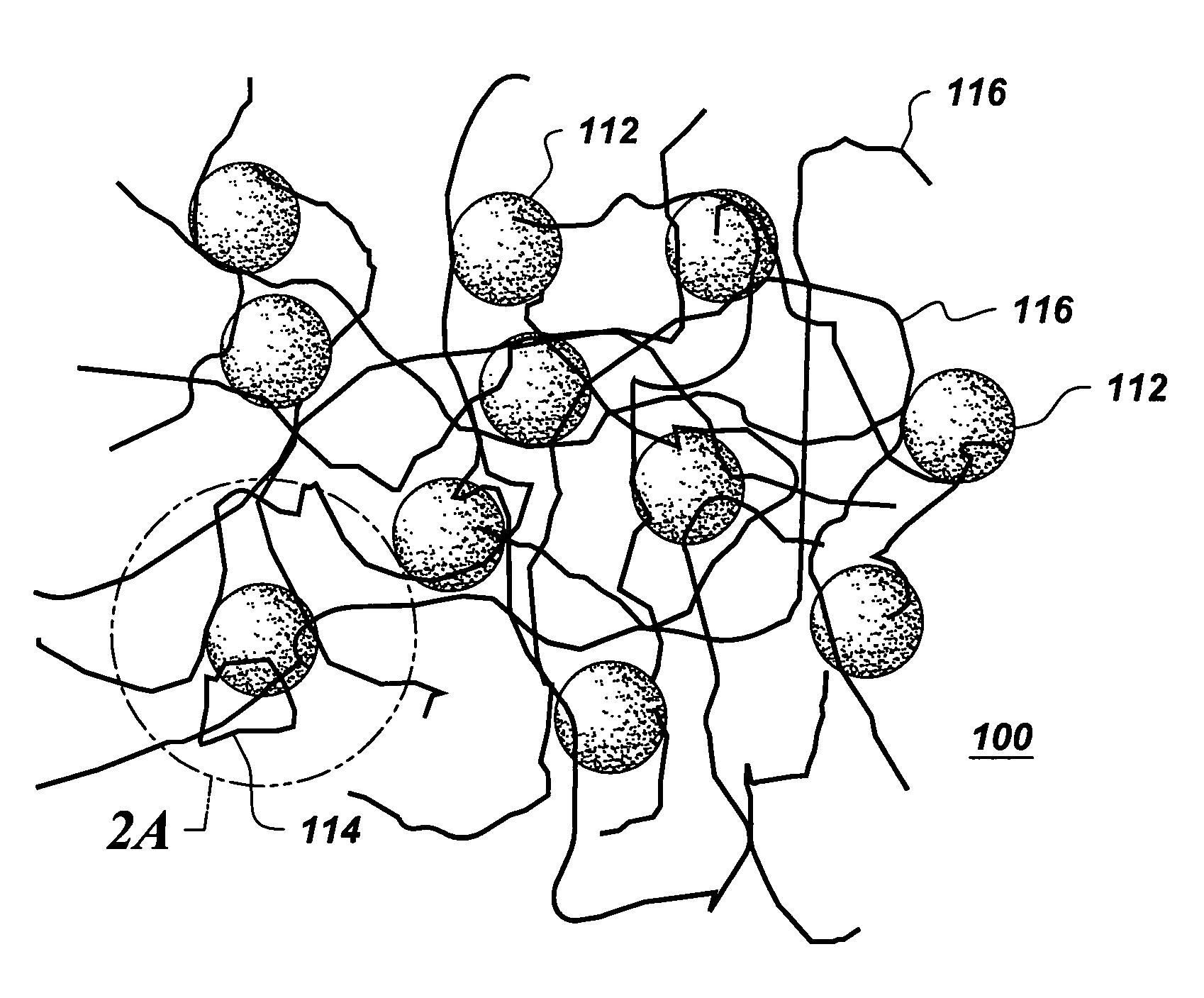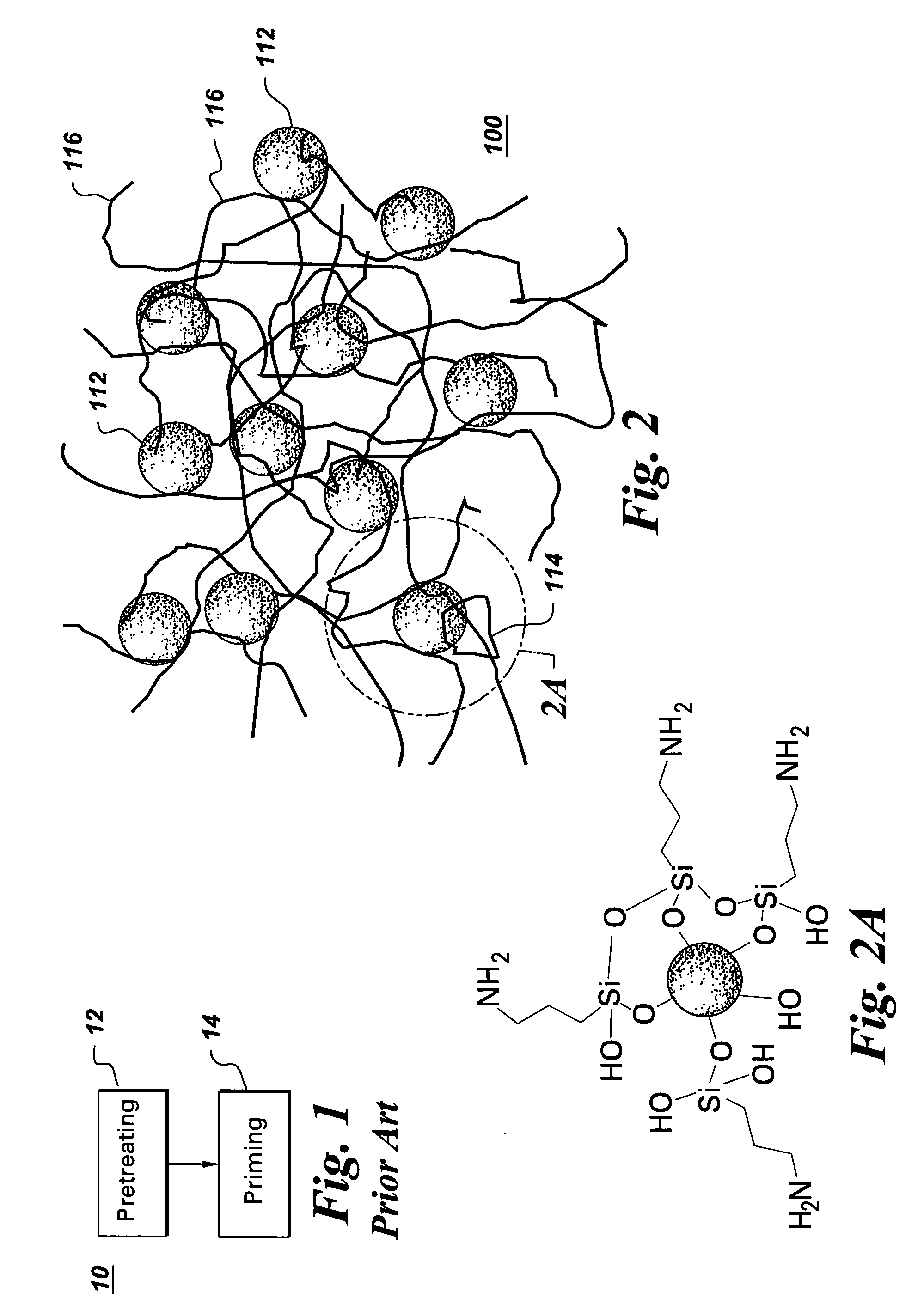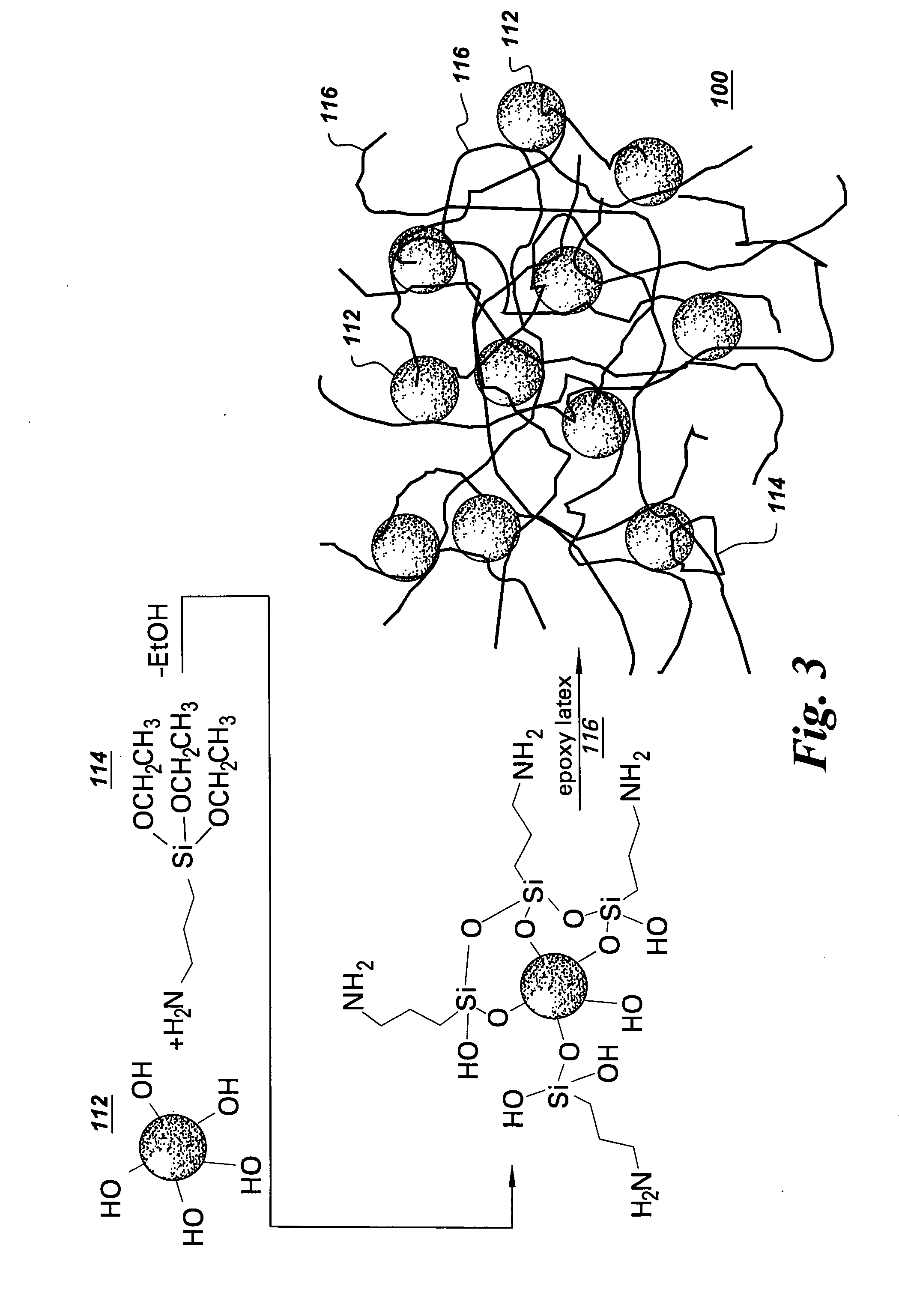Coating compositions and methods of making and using them
- Summary
- Abstract
- Description
- Claims
- Application Information
AI Technical Summary
Problems solved by technology
Method used
Image
Examples
example 1
[0051] Example 1 describes a process of forming a resin 100 and coating a substrate with the resin 100. The resin 100 includes colloidal silica as the colloidal metal oxide 112, 3-aminopropyltriethoxysilane (APTES) as the silane 114, and epoxy latex as the water dispersible polymer 116.
[0052] A 14.7 g amount of colloidal silica (silica content: 34 wt. %) was first diluted with 182.7 g water. Then a mixture of 24 g silane (APTES), 72 g ethanol and 6.6 g acetic acid was slowly added to the diluted silica colloidal metal oxide to form a mixture and stirred overnight. Then, 20 g of epoxy latex (solid content: 50%, epoxy equivalent: 440-450 g / equiv. epoxy) was added to the mixture to form the resin 100. After stirring for 30 minutes, the surface of a substrate was dip-coated with the resin 100. In this example, a cleaned cold-rolled steel panel was the substrate. A wet film was formed on the steel substrate. The wet film was dried at ambient temperature overnight; then cured at 130° C. ...
example 2
[0055] Example 2 describes a process of forming a resin 100 comprising multiple kinds of silanes 114, as compared to Example 1 which had one type of silane 114, and coating a substrate with the resin 100.
[0056] The procedure was the same as described in Example 1, except the resin 100 includes the amino silanes APTES as well as ureidosilanes A1524 (3-ureidopropyltrimethoxysilane, UPTMS).
[0057] A 2.4 g amount of APTES, 7.2 g ureidosilane, 28.8 g ethanol, and 2.64 g acetic acid was added slowly to a diluted colloidal silica (5.88 g 34 wt. % silica colloidal metal oxide diluted by 73.08 g water) to form a mixture. The mixture was then stirred overnight. Then, 8 g of epoxy latex (solid content: 50%, epoxy equivalent: 440-450 g / equiv. epoxy) was added to the mixture to form the resin 100. The resin 100 was then stirred for about 30 minutes.
[0058] The surface of a substrate was coated with the resin 100 as in Example 1 and the evaluation method of anti-corrosion performance was the sam...
example 3
[0060] Example 3 describes a process of making the corrosion inhibitors 200. A 50 g amount of aniline was dissolved in 500 mL 1 mol / L HCl solution and cooled to about 5° C. in ice bath. 122 g ammonium peroxydisulfate (NH4)2S2O8 was dissolved in 500 mL 1 mol / L HCl solution and then dropped to the aniline solution to form a mixture. After about 5 minutes, the mixture became dark green as a precipitate formed. The mixture was stirred overnight. Then the dark green precipitate was filtered to form a cake. The cake was washed portionwise with 1 mol / L HCl solution until the filtrate became colorless. Then the dark green precipitate cake was suspended in a 500 mL 0.1 mol / L NH4OH solution, and stirred overnight. The suspension was then filtered and washed three times with 0.1 mol / L NH4OH. Then the filtered cake was resuspended in 0.1 mol / L NH4OH solution for 2 hours. The filtered cake then became black in color. Then the black cake was collected and washed with 0.1 mol / L NH4OH.
[0061] A 20 ...
PUM
| Property | Measurement | Unit |
|---|---|---|
| Electrical conductivity | aaaaa | aaaaa |
| Composition | aaaaa | aaaaa |
| Corrosion properties | aaaaa | aaaaa |
Abstract
Description
Claims
Application Information
 Login to View More
Login to View More - R&D
- Intellectual Property
- Life Sciences
- Materials
- Tech Scout
- Unparalleled Data Quality
- Higher Quality Content
- 60% Fewer Hallucinations
Browse by: Latest US Patents, China's latest patents, Technical Efficacy Thesaurus, Application Domain, Technology Topic, Popular Technical Reports.
© 2025 PatSnap. All rights reserved.Legal|Privacy policy|Modern Slavery Act Transparency Statement|Sitemap|About US| Contact US: help@patsnap.com



